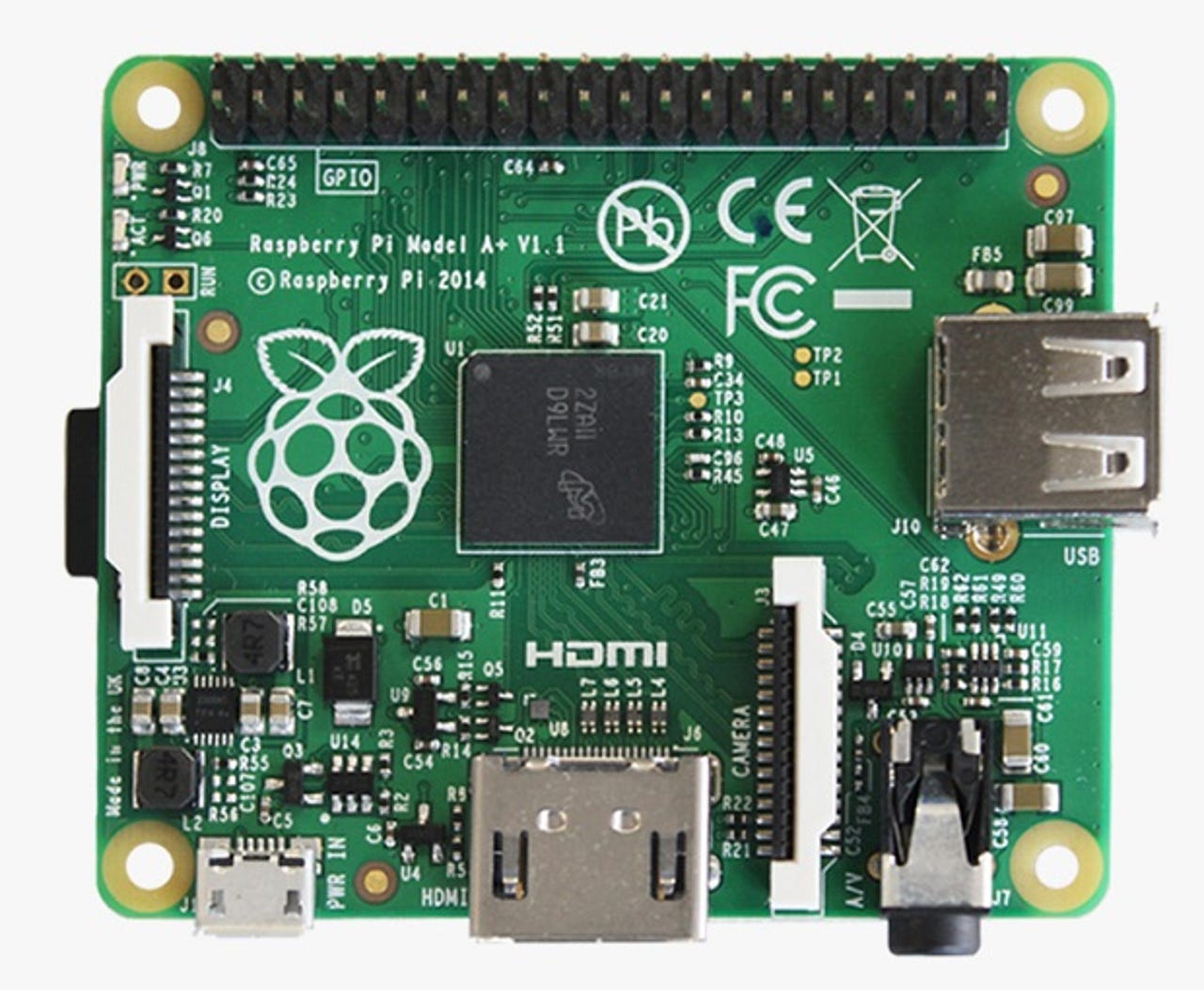Raspberry Pi Model A+ board is smaller, cheaper than Model A predecessor


The Raspberry Pi Foundation has been a crucial part of a revolution in low-cost Linux computing since it introduced its original board back in 2012 for a mere $35. Since then, it's released a number of improved boards, including the brawnier Pi B+ model last summer that retained that original price. The result has been sales of around four million Raspberry Pi boards, along with competition from the likes of Arduino (which actually released its first ARM-based board months before Raspberry Pi debuted) and the more powerful, pricier Banana Pi.
With the Raspberry Pi Model A, the foundation went cheaper and more energy efficient, dropping the price to $25. Now with the just-announced Model A+, Raspberry Pi has gone cheaper still, lowering the price another $5 while retaining some of the improvements from the B+.
The A+ still retains the same chipset (Broadcom BCM2835), processor (ARM1176JZ-F), and amount of RAM (256MB) as the Model A, but is 20mm smaller and slurps even less power. Like the B+, it now offers a microSD slot instead of a standard-size SD slot, improved audio quality, and an increase in GPIO pins to 40. It still only has a single USB port, however, whereas the B+ includes four, and lacks the Ethernet port that the B+ comes with.
Of course, the $20 price tag only gets you the Model A+ board (available in the US through MCM Electronics). You need to house it in something, which can be a point of consternation. One of the Raspberry Pi's cool features, however, is that there are a variety of ways the board can be used, from smartphones to tablets to wearables and more. In fact, the lower power requirements of the Model A+ should make it even better suited than its predecessors for mobile applications.